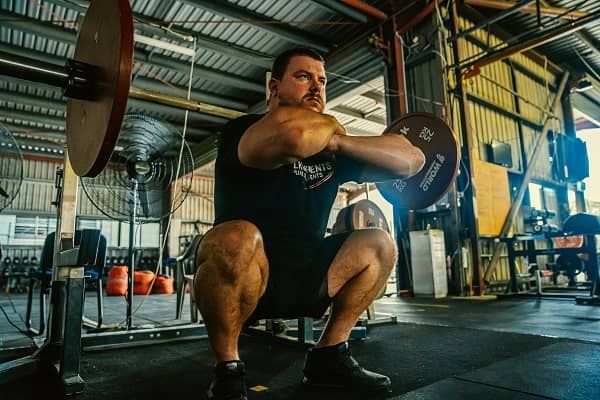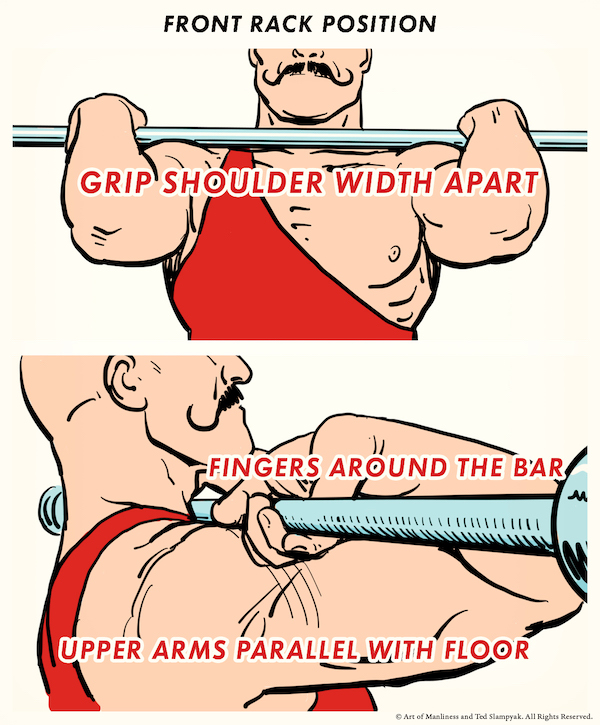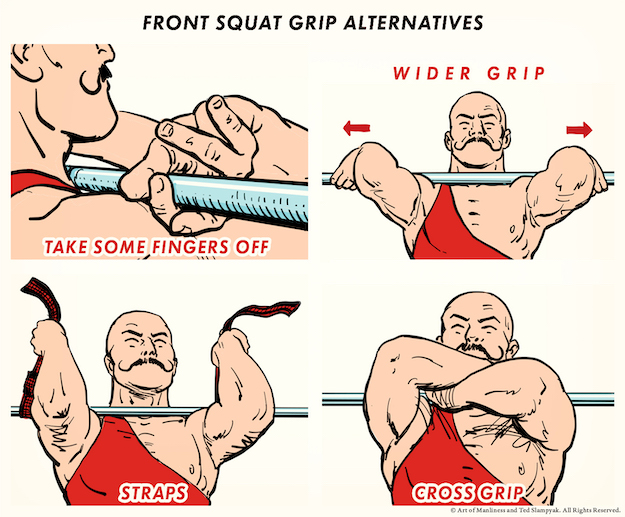
What are front squats?
There are a few variations of the good old squat. In addition to the traditional back squat, you have the goblet squat, hack squat and Bulgarian split squat to name a few. One of the lesser-used movements is the front squat. So, What are front squats?
A front squat is essentially the same motion as a back squat but the weight is supported on your upper chest rather than the upper back.
By changing the position of the weight, you are forcing your quads to take more of the load and your core muscles to work harder at stabilising the body.
Traditional back squats may allow you to shift a heavier load but adding front squats to your routine will force your legs to grow to their full potential.
Which muscles are targeted with front squats?
Front squats are a compound exercise so they work more than one muscle group making them great for overall mass and strength development. The main target muscles are the Quadricep muscles at the front of the upper legs and the gluteal muscles that make up the buttocks.
The hamstrings, calves and core muscles are all heavily activated as stabilisers with the shoulders and forearms taking on a minor role in supporting the bar.
There is no better mass builder for the lower body than the squat. Adding front squats in once in a while or adding it to part of your existing routine is a great way to make the quads explode.
How do I perform front squats?
If you are used to back squats, you will likely find the front squat an easy movement to perform. You will not be able to lift as heavy with the front squat but the hip hinge and knee flexion are very similar. It is more difficult to support the bar on the upper chest than it is to rest it on your back especially if you do not have flexible wrists.
The standard way to grip the bar is with hands just shoulder-width apart and all fingers around the bar but many find this grip impossible.

There are a few alternative ways to perform the front squat if you are not able to grip the bar in the standard way.

Most people will opt for the cross grip if they can not use a standard grip but all are just as effective. As long as the bar is secure and resting on your upper chest comfortably, that is all that matters. Play around with different grips until you find the one that suits you.
- Set a bar up on a rack at chest height and load up with your desired weight.
- Step under the bar with your chest and grip it with your preferred grip. Take the strain of the bar and step back from the rack.
- Keep your back straight and feet just narrower than shoulder width. Steady the bar.
- Slowly lower the bar by hinging at the hips, bending the knees but keeping the back straight.
- Keep squatting until you are slightly below parallel and you can feel your quads stretching.
- Press up with an explosive movement whilst breathing out. Do not let the bar bounce.
- Repeat for the required number of reps and sets keeping a slow negative movement and an explosive positive movement.
Front squats for beginners.
If you have never before performed front squats or are new to squatting in general, start by just using your bodyweight and perfecting the motion. You need to be able to get a good hinge at the hips, flex the knee joint and keep your back straight.
You can then start adding resistance by holding a kettlebell or dumbbell on your chest. As you progress, you can move over to the rack and start loading up a barbell bar.
You can also use a bench as a support for your downward squat movement. By placing a flat bench in the rack, you can perform a standard front squat but as you lower yourself, use the bench as a seat to rest for a second before pressing back up.
This is a good option for beginners or a safety measure for advanced trainers if you are training with a heavy load to failure.

